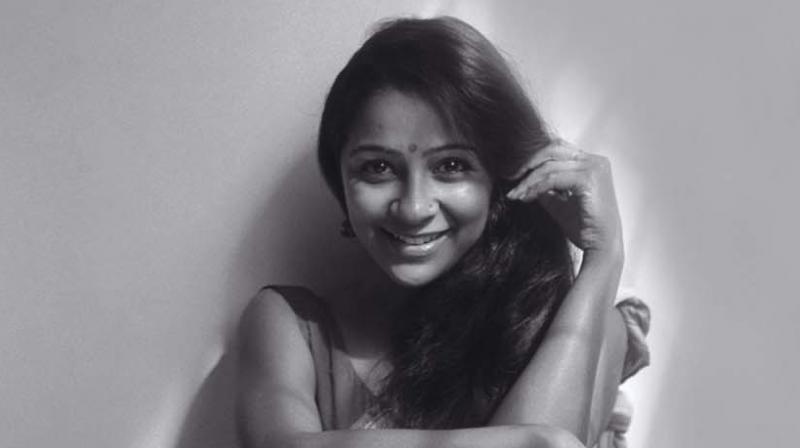Photographer extraordinaire Raghu Rai has been capturing exceptional images for decades now.
“Photography is history, not art,” he begins. “Art by itself is useless and meaningless. The purpose of photography is not to become art; it is bigger than art. History, can be rewritten, but photographs can’t be. It’s a responsibility.”
Even while talking and savouring the caramel sprinkles, he clicked photos of the city through the glass window near him. Below was the bustling city, people and vehicles hurriedly moving to their destinations trying to flee from the hot sun in the noon, but his camera was facing elsewhere — at the Metro workers toiling hard, ignoring the dust, heat and commotion to raise a metropolis. Very much like a Raghu Rai frame. “Kochi,” he says, “is a special place with its backwaters, rains, lighting, islands, architecture… especially the Old Cochin. There is so much spirit and heritage all over the place. But sadly, it is not preserved properly.”
A person who has been to the city several times in the past, Rai is unhappy about its current status. Pointing at the Metro rail, Rai says, “This is a huge monster snake running through the city seamlessly. Kochi is not a city that needs a Metro, but politicians need a reason to make money, no?”
Rai has always been inspired by what he calls “the ever-changing spirit of life”. “Life on the streets, backwaters, inside and outside monuments are inspiring and challenging.” The great ‘visionary’ has immensely contributed in changing the face and definition of photojournalism over five decades. Everything he clicked – the Bhopal Tragedy, people around the Taj Mahal, the myriad expressions of Mother Teresa, Indira Gandhi, HH the Dalai Lama — were more than just frames.
For the perfect click, he goes with his instinct. “A photograph, to me, is a moment of realisation and experience. It’s the same for a painter or a writer. A photographer should be an observer with sensitivity and responsibility. He should connect with the space, feeling and experiencing the wholesomeness of the place,” he states.
A witness to Bhopal tragedy, which he has chronicled a lot as photos, documentaries and writings, that iconic photograph must have been a painful memory. But Rai surprises, “No, it isn’t. It was shocking and numbing, but one needs to rise to the occasion and be responsible to share it to the world. Numbness and shock won’t take you anywhere. Journalism is not that simple.”
The first Indian photographer to join Magnum Photos, an international photographers' cooperative formed by masters like Henri Cartier-Bresson, Robert Capa and David Seymour, Rai’s photos have been published in all international publications. The Padma Shri awardee has been through the transition ages of the camera, but he is not a nostalgic guy stuck in the past.
“I have used the film camera for 35 years, but the day I started clicking with the digital camera, I couldn’t go back; it gave me such a control and freedom. This (caressing his camera) gives me the ability to penetrate, concentrate, meditate and capture life and nature,” he explains. His photographs of former Prime Minister Indira Gandhi are very famous. He has admitted that he had been photographing her almost on a daily basis. Over the regimes, leaders and their persona have changed; so has access to them. “Earlier, photographers could be five-eight feet away from the PM. If any security stopped us, we could say Dekhiye Indiraji… and she’d glare at them and without speaking a word, would make them run away,” he laughs, adding, “Today, due to security issues, we are at least 100 feet away from them. That’s why there are no intimate moments with the PM and other ministers. They are no longer humans; they have become just dry political situations on the dais.”
Mother Teresa, for Rai, is a mother and a teacher. “Dedicated to serving the poorest of the poor, she is a mother to anyone who met her. With so much love and concern, her service was amazing. She has taught me many things,” he recalls. In the age of Insta-photographers, he has some advice for wannabe photographers. “Unless you have something specific to capture, do not click. It has to be love and passion. Practise every minute. Carry your camera always. Being there and now is the key. Instead of creatively reproducing memories, connect eyes to heart,” he says. He is always clicking and documenting — currently on the Himalayas, sacred rivers, a book on Sadhguru Jaggi Vasudev and his Rally for Rivers, on HH the Dalai Lama…. Many of his famous clicks are in black and white. Does her prefer black and white to colour? “Not necessarily. It’s about expression. Where I find lots of colour and it’s uncontrollable to restrict, I go with black and white. Rivers are in colour. But the Himalayas, Sadhguru and the Dalai Lama are not,” he says. Having travelled all over India, a paradise for photographers, there is more to learn and chronicle. He animatedly explains, “The more you know and understand India, you discover how little you know and how small you are. Knowing India is an endless process. You have to inhale the whole world into it and deliver. There is so much left to know.”
Published in Deccan Chronicle on September 23, 2017


